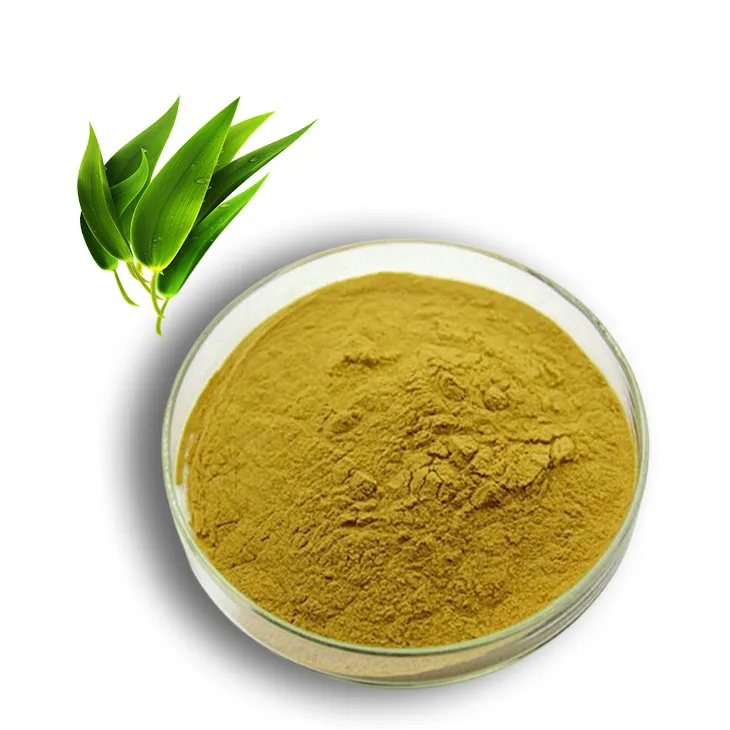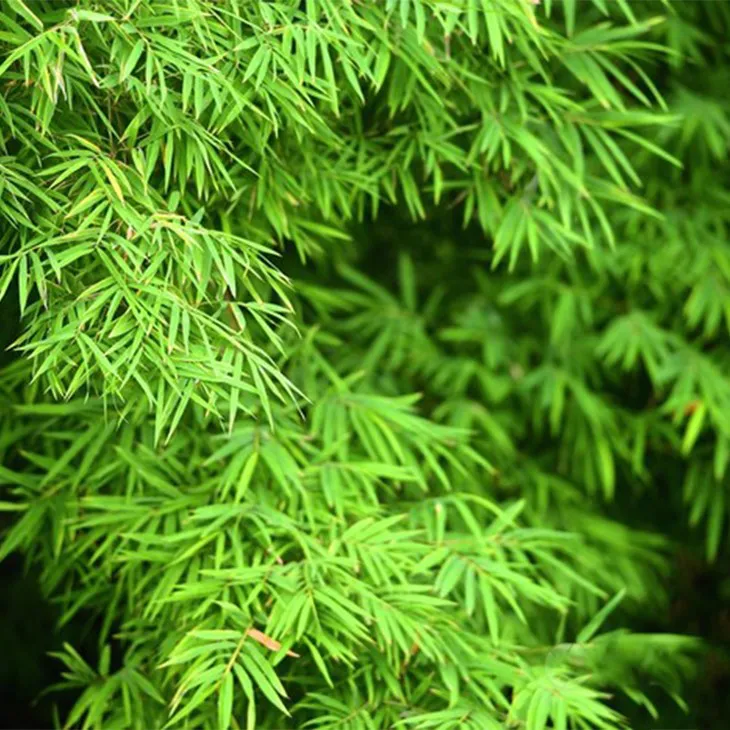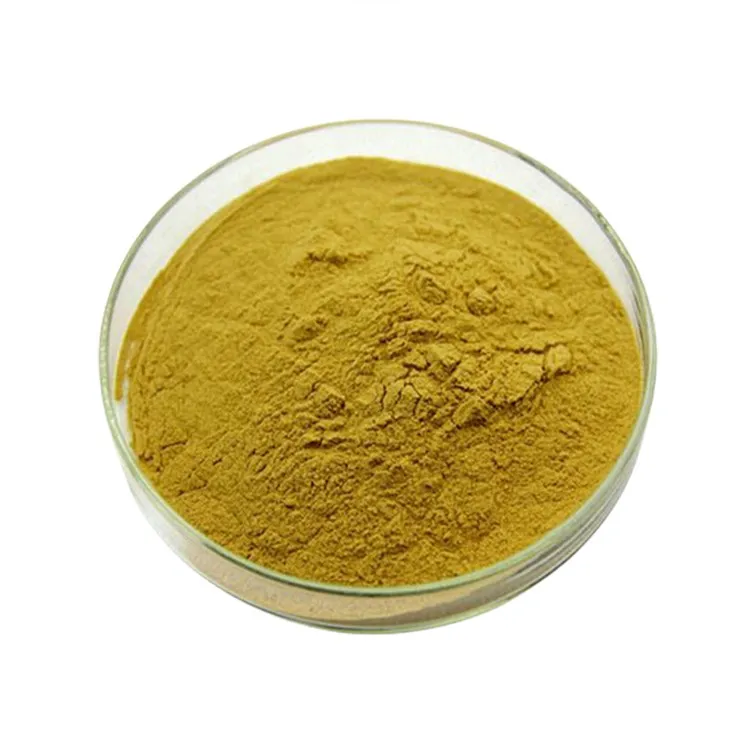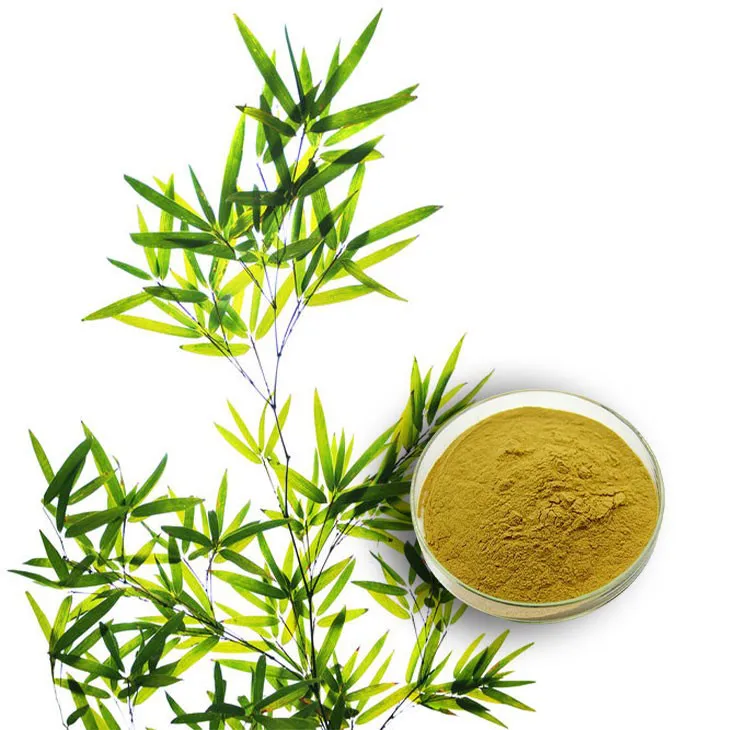- 0086-571-85302990
- sales@greenskybio.com
Best Bamboo Leaf Extract: A Guide to Selecting the Best Bamboo Leaf Extract
2024-11-12

1. Introduction
Bamboo Leaf extract has gained significant attention in recent years due to its potential health benefits and various applications in different industries. However, with the increasing number of products available in the market, it can be challenging to select the best Bamboo Leaf extract. This guide aims to provide comprehensive information on how to choose the highest - quality Bamboo Leaf extract by considering crucial factors such as origin, processing techniques, and chemical constituents.

2. Understanding Bamboo Leaf Extract
Bamboo leaf extract is derived from the leaves of bamboo plants. It contains a rich profile of bioactive compounds, including flavonoids, phenolic acids, and polysaccharides. These compounds are responsible for the various properties associated with bamboo leaf extract, such as antioxidant, anti - inflammatory, and antimicrobial activities.

3. Origin of Bamboo
3.1. Geographic Location
The origin of the bamboo used for extraction plays a vital role in determining the quality of the bamboo leaf extract. Different regions may have distinct environmental conditions, which can influence the chemical composition of the bamboo leaves. For example, bamboo grown in areas with rich soil, proper sunlight, and adequate water supply may produce leaves with higher levels of bioactive compounds. Some regions known for high - quality bamboo include Asia, particularly China and India, where bamboo has been cultivated for centuries and has adapted well to the local climates.
3.2. Bamboo Species
There are numerous bamboo species, and each species may have different characteristics in terms of its leaf composition. Some species may be more suitable for extraction due to their higher content of desired bioactive substances. For instance, Phyllostachys pubescens is a commonly used bamboo species for extraction, as it has been found to contain significant amounts of flavonoids. When selecting bamboo leaf extract, it is essential to know the species of bamboo from which it is derived.

4. Processing Techniques
4.1. Harvesting
The timing of harvesting bamboo leaves is crucial. Bamboo leaves should be harvested at the appropriate stage of growth to ensure maximum bioactive compound content. Typically, leaves are harvested when they are fully developed but not yet showing signs of senescence. Harvesting too early or too late can result in lower quality extract. Additionally, proper harvesting methods should be employed to avoid damage to the leaves and ensure their integrity.
4.2. Extraction Methods
- Solvent Extraction: This is one of the most common methods. Different solvents can be used, such as ethanol, water, or a combination of both. Ethanol - based extraction is often preferred as it can effectively extract flavonoids and other lipophilic compounds. However, water extraction is also used, especially for extracting polysaccharides. The choice of solvent and extraction conditions (such as temperature, time, and solvent - to - sample ratio) can significantly impact the yield and quality of the extract.
- Supercritical Fluid Extraction: This is a more advanced extraction technique. Supercritical carbon dioxide is used as the extraction medium. It offers several advantages, including a relatively clean extraction process (no solvent residues), high selectivity, and the ability to extract a wide range of compounds. However, it requires specialized equipment and is more expensive compared to solvent extraction.
4.3. Purification and Concentration
After extraction, the extract may need to be purified and concentrated. Purification processes can remove impurities such as pigments, proteins, and other unwanted substances. Concentration is carried out to increase the concentration of bioactive compounds in the extract. Different techniques such as filtration, chromatography, and evaporation can be used for purification and concentration. The effectiveness of these processes can affect the final quality of the bamboo leaf extract.

5. Chemical Constituents
5.1. Flavonoids
Flavonoids are one of the major groups of bioactive compounds in bamboo leaf extract. They are known for their antioxidant, anti - inflammatory, and anticancer properties. Different flavonoids, such as orientin, isoorientin, and vitexin, may be present in the extract. The content and ratio of these flavonoids can vary depending on the origin of the bamboo and the processing techniques used. Higher levels of flavonoids generally indicate a more potent bamboo leaf extract in terms of antioxidant and other beneficial activities.
5.2. Phenolic Acids
Phenolic acids in bamboo leaf extract also contribute to its antioxidant and antimicrobial properties. Examples of phenolic acids found in bamboo leaf extract include caffeic acid, p - coumaric acid, and ferulic acid. The presence and quantity of these phenolic acids can affect the overall quality and effectiveness of the extract. They can also interact with other bioactive compounds in the extract, enhancing or modulating their activities.
5.3. Polysaccharides
Polysaccharides are another important component of bamboo leaf extract. They have been shown to possess immunomodulatory, anti - diabetic, and anti - tumor activities. The molecular weight, structure, and composition of polysaccharides can vary, and these factors can influence their biological activities. Water - based extraction methods are often more suitable for extracting polysaccharides from bamboo leaves.
6. Quality Control and Standardization
- Analysis of Chemical Composition: To ensure the quality of bamboo leaf extract, it is necessary to analyze its chemical composition. This can be done using various analytical techniques such as high - performance liquid chromatography (HPLC), gas chromatography - mass spectrometry (GC - MS), and spectrophotometry. These techniques can accurately determine the levels of bioactive compounds in the extract.
- Microbial and Purity Testing: Bamboo leaf extract should also be tested for microbial contamination, including bacteria, fungi, and yeasts. Purity testing is carried out to ensure that there are no harmful substances or excessive levels of impurities in the extract. This helps to guarantee the safety and quality of the product.
- Standardization: Standardization of bamboo leaf extract is important to ensure consistency in its quality and effectiveness. This involves setting specific criteria for the content of bioactive compounds, such as flavonoids or polysaccharides, and ensuring that different batches of the extract meet these criteria.
7. Applications of Bamboo Leaf Extract
7.1. In the Food and Beverage Industry
Bamboo leaf extract can be used as a natural antioxidant and flavor enhancer in food and beverage products. It can be added to products such as tea, juice, and baked goods. The antioxidant properties of the extract can help to extend the shelf - life of these products by preventing oxidative rancidity. Moreover, the unique flavor of bamboo leaf extract can add a pleasant and distinctive taste to food and beverages.
7.2. In the Cosmetic and Skincare Industry
Due to its antioxidant and anti - inflammatory properties, bamboo leaf extract is used in cosmetic and skincare products. It can be found in products such as creams, lotions, and serums. The extract can help to protect the skin from oxidative stress, reduce inflammation, and improve skin complexion. It may also have anti - aging effects by promoting collagen synthesis and reducing the appearance of wrinkles.
7.3. In the Pharmaceutical Industry
Bamboo leaf extract has potential applications in the pharmaceutical industry. Its bioactive compounds may be developed into drugs for the treatment of various diseases, such as cancer, diabetes, and inflammatory disorders. However, more research is needed to fully understand its pharmacological mechanisms and to develop effective drugs based on bamboo leaf extract.
8. Conclusion
Selecting the best bamboo leaf extract requires a comprehensive understanding of various factors, including its origin, processing techniques, chemical constituents, and quality control. By considering these aspects, consumers and industries can ensure that they are choosing a high - quality bamboo leaf extract that meets their specific needs. Whether it is for use in food, cosmetics, or pharmaceuticals, the quality of the bamboo leaf extract is crucial for its effectiveness and safety.
FAQ:
Q1: What are the main types of bamboo leaf extract?
There are mainly two types of bamboo leaf extract. One is the water - soluble extract, which contains various water - soluble compounds like flavonoids, phenolic acids. The other is the alcohol - soluble extract, which may have different chemical compositions and properties compared to the water - soluble one. The type of extract is often determined by the extraction solvent used.
Q2: How does the origin of bamboo affect the quality of its leaf extract?
The origin of bamboo is crucial for the quality of its leaf extract. Bamboo growing in different regions may be exposed to different environmental conditions such as soil quality, climate, and altitude. For example, bamboo growing in clean and unpolluted areas with rich soil may produce leaves with higher levels of beneficial compounds. Also, some regions may have specific bamboo species that are known for their high - quality leaf extracts.
Q3: What are the important processing techniques for bamboo leaf extract?
Common processing techniques include extraction, purification, and drying. Extraction is the first step, where solvents like water or alcohol are used to draw out the active compounds from the bamboo leaves. Purification is then carried out to remove impurities and unwanted substances. Drying is important to preserve the extract and make it stable for storage and further use. Advanced techniques may also involve chromatography for better separation and identification of the chemical constituents.
Q4: Which chemical constituents in bamboo leaf extract are most important for its effectiveness?
Flavonoids are among the most important chemical constituents in bamboo leaf extract. They have antioxidant, anti - inflammatory, and antimicrobial properties. Phenolic acids also play a role in antioxidant activity. In addition, some polysaccharides in the extract may have immunomodulatory effects. These chemical constituents work together to contribute to the overall effectiveness of the bamboo leaf extract in various applications such as in the food, pharmaceutical, and cosmetic industries.
Q5: How can one ensure the purity of bamboo leaf extract?
To ensure the purity of bamboo leaf extract, it is important to start with high - quality raw materials. Selecting bamboo leaves from reliable sources is the first step. During the processing, strict quality control measures should be implemented. This includes using proper extraction and purification techniques. Analytical methods such as high - performance liquid chromatography (HPLC) can be used to detect and quantify the chemical constituents and impurities in the extract, thus ensuring its purity.
Related literature
- Analysis of Chemical Constituents in Bamboo Leaf Extract"
- "The Influence of Bamboo Origin on the Quality of Leaf Extract"
- "Processing Techniques for Optimal Bamboo Leaf Extract Production"
- ▶ Hesperidin
- ▶ Citrus Bioflavonoids
- ▶ Plant Extract
- ▶ lycopene
- ▶ Diosmin
- ▶ Grape seed extract
- ▶ Sea buckthorn Juice Powder
- ▶ Fruit Juice Powder
- ▶ Hops Extract
- ▶ Artichoke Extract
- ▶ Mushroom extract
- ▶ Astaxanthin
- ▶ Green Tea Extract
- ▶ Curcumin
- ▶ Horse Chestnut Extract
- ▶ Other Product
- ▶ Boswellia Serrata Extract
- ▶ Resveratrol
- ▶ Marigold Extract
- ▶ Grape Leaf Extract
- ▶ New Product
- ▶ Aminolevulinic acid
- ▶ Cranberry Extract
- ▶ Red Yeast Rice
- ▶ Red Wine Extract
-
Quercetin
2024-11-12
-
Curcumin Extract
2024-11-12
-
Bilberry Extract
2024-11-12
-
Hawthorn Extract
2024-11-12
-
Panax Ginseng Leaf Extract
2024-11-12
-
Black Pepper Extract
2024-11-12
-
Lavender Extract
2024-11-12
-
Clove Powder
2024-11-12
-
Natural grape seed extract
2024-11-12
-
Echinacea Extract
2024-11-12





















